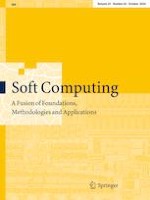20-08-2020 | Foundations
Multiple clustering and selecting algorithms with combining strategy for selective clustering ensemble
Published in: Soft Computing | Issue 20/2020
Log inActivate our intelligent search to find suitable subject content or patents.
Select sections of text to find matching patents with Artificial Intelligence. powered by
Select sections of text to find additional relevant content using AI-assisted search. powered by
